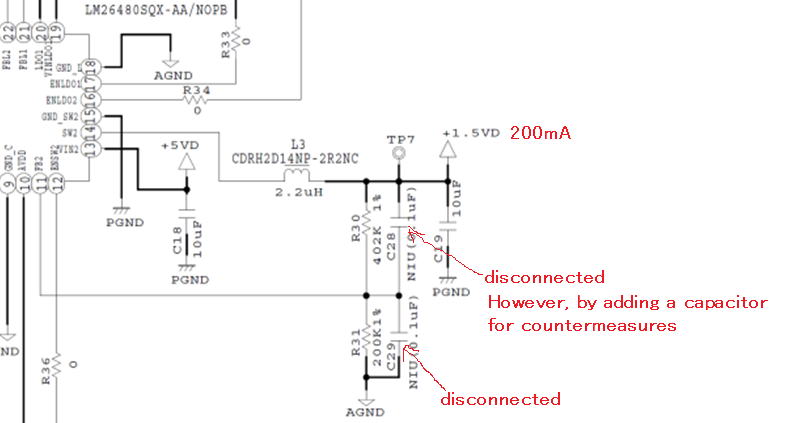Hi,
I created a circuit with the device of LM26480.
And now, I am evaluating its behavior.
I attach the circuit diagram, but the output voltage of 1.5V is oscillating.
I confirmed the SWpin, but the switching is swinging up and down in a continuous state.
I believe that there is a problem with feedback stability.
As a countermeasure, a ceramic capacitor was connected in parallel to the upper side of the feedback resistor.
I will attach the result.
Adding 120pF seems to have an effect, but there is no change by increasing the capacity of the capacitor any more.
I want to ask you a question.
Is there a way to reduce the fluctuation of the output voltage other than adding a capacitor above the feedback resistor?
(Additional Information)
Capacitors are not connected in parallel to the feedback resistor of the circuit diagram in the first place.
An output voltage of 1.5V supplies a current of about 200mA to the load side.
Best Regards,




